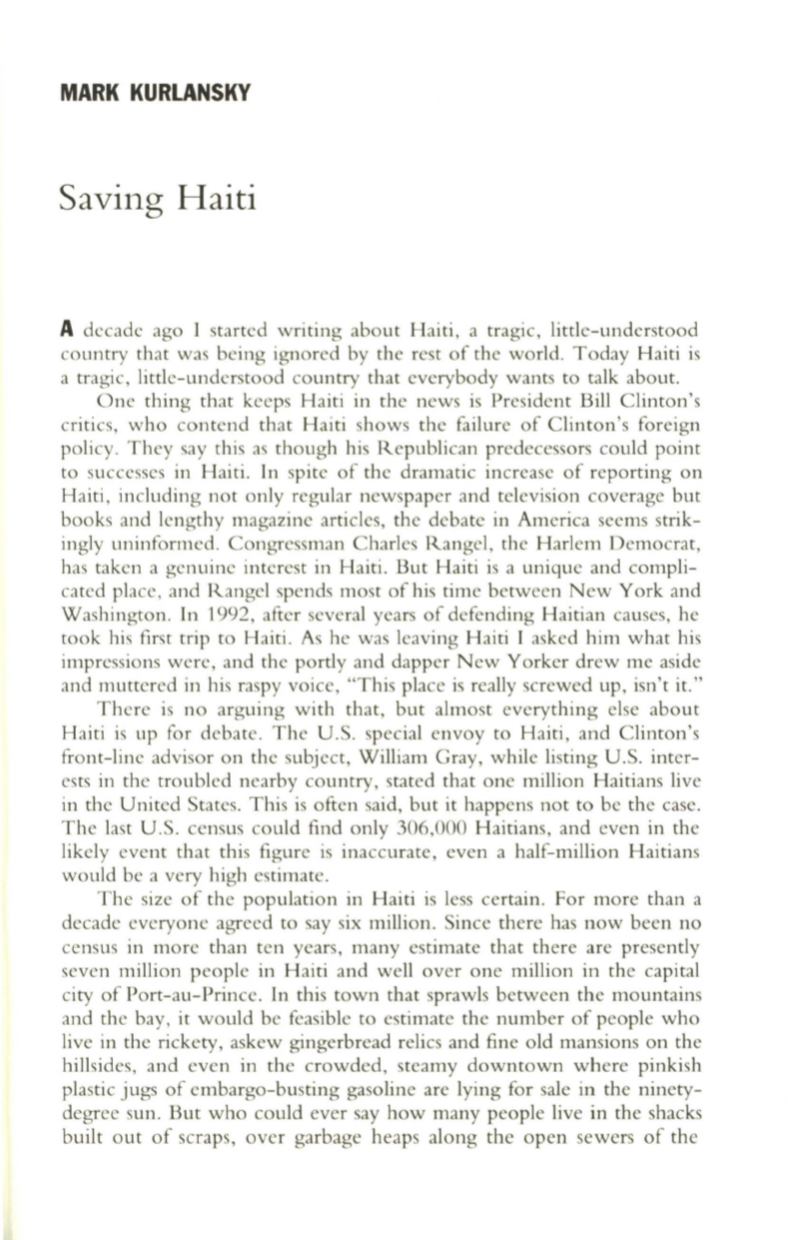
MARK KURLANSKY
Saving Haiti
A
decade ago I started writing about Haiti, a tragic, little-understood
country that was being ignored by the rest of the world. Today Haiti is
a tragic, little-understood country that everybody wants to talk about.
One thing that keeps Haiti in the news is President Bill Clinton's
critics, who contend that Haiti shows the failure of Clinton's foreign
policy . They say this as though his Republican predecessors could point
to successes in Haiti. In spite of the dramatic increase of reporting on
Haiti, including not only regular newspaper and television coverage but
books and lengthy magazine articles, the debate in America seems strik–
ingly uninformed. Congressman Charles Rangel, the Harlem Democrat,
has taken a genuine interest in Haiti. But Haiti is a unique and compli–
cated place, and Rangel spends most of his time between New York and
Washington. In 1992, after several years of defending Haitian causes, he
took his first trip to Haiti. As he was leaving Haiti I asked him what his
impressions were, and the portly and dapper New Yorker drew me aside
and muttered in his raspy voice, "This place is really screwed up, isn't it."
There is no arguing with that, but almost everything else about
Haiti is up for debate. The U.S. special envoy to Haiti, and Clinton's
front-line advisor on the subject, William Gray, while listing U.S. inter–
ests in the troubled nearby country, stated that one million Haitians live
in the United States. This is often said, but it happens not to be the case.
The last U.S. census could find only 306,000 Haitians, and even in the
likely event that this figure is inaccurate, even a half-miIIion Haitians
would be a very high estimate.
The size of the population in Haiti is less certain. For more than a
decade everyone agreed to say six million. Since there has now been no
census in more than ten years, many estimate that there are presently
seven million people in Haiti and well over one million in the capital
city of Port-au-Prince. In this town that sprawls between the mountains
and the bay, it would be feasible to estimate the number of people who
live in the rickety, askew gingerbread relics and fine old mansions on the
hillsides, and even in the crowded, steamy downtown where pinkish
plastic jugs of embargo-busting gasoline are lying for sale in the ninety–
degree sun. But who could ever say how many people live in the shacks
built out of scraps, over garbage heaps along the open sewers of the


